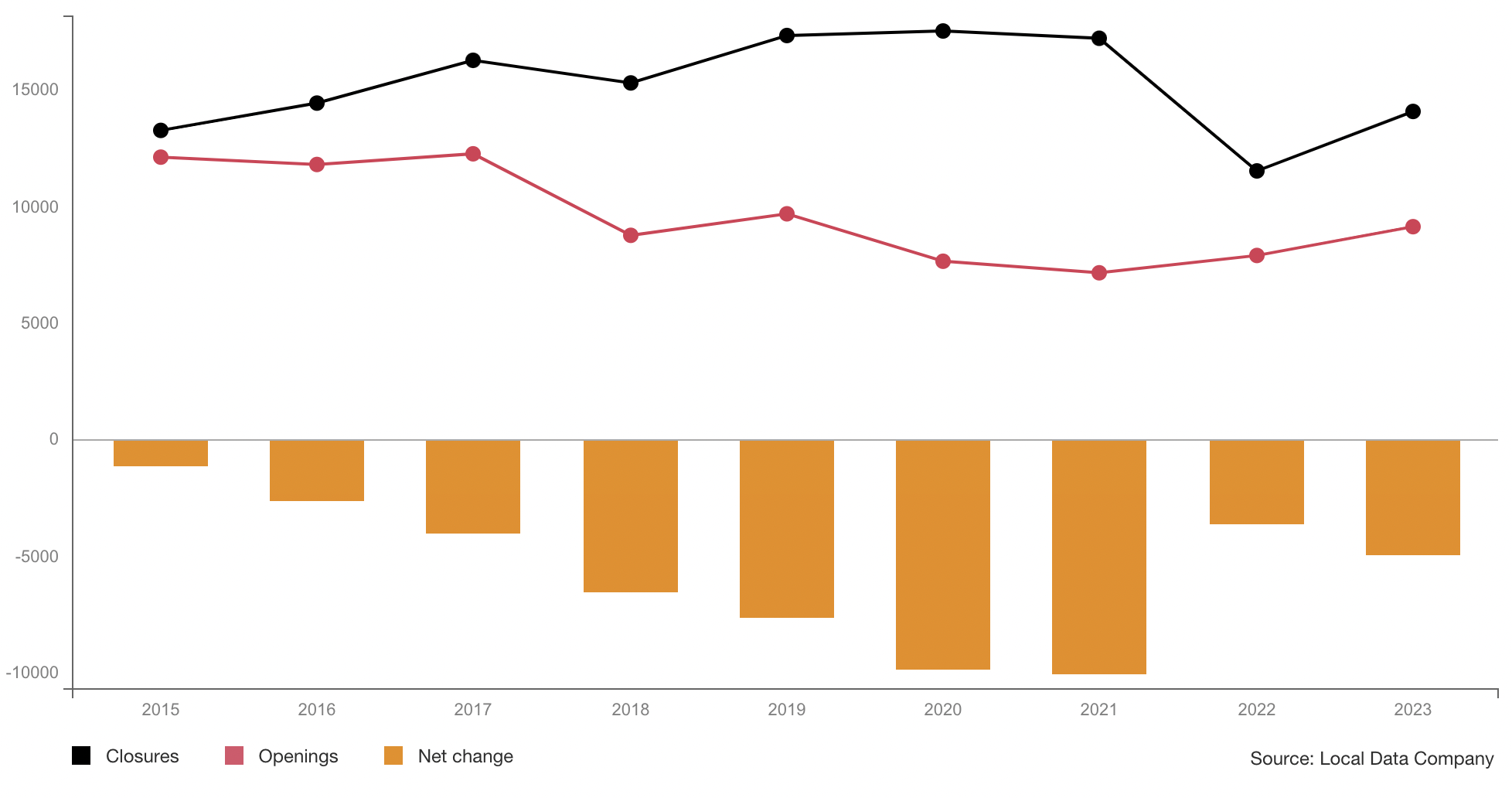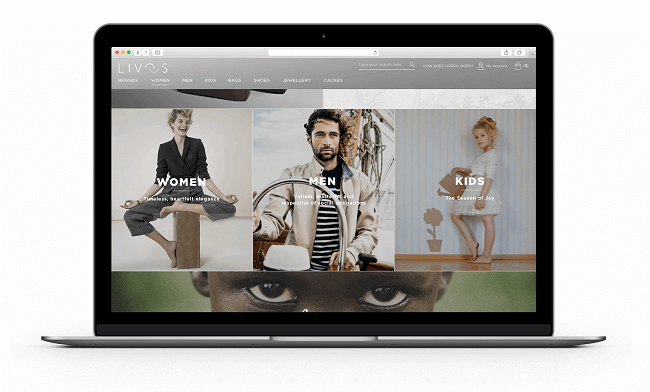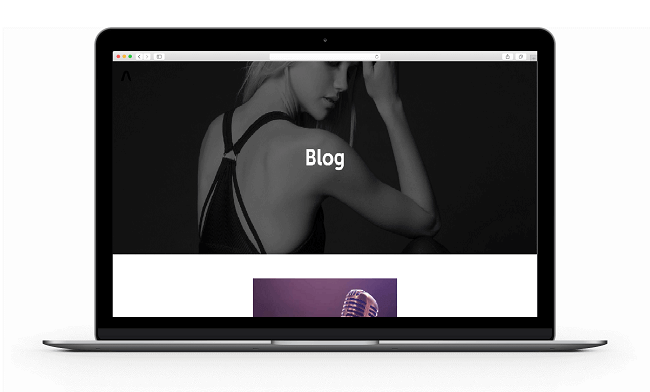10 Most Effective Marketing Strategies for Fashion Brands
Every fashion brand needs a good marketing strategy to help it stay ahead of its competition. With the global fashion eCommerce industry expected to reach $1505.09 billion by 2029, a good strategy will not only help them stay afloat in the treacherous sea that is eCommerce, but also grow as others flounder in confusion.
As for you, it doesn’t matter if you’re brand new to the fashion world or a seasoned veteran — no matter where you lie, you need an have an effective marketing strategy for your clothing business. Digital marketing for fashion brands specifically has changed dramatically over the past few years, and your business must constantly adapt and evolve to stay ahead of the competition.
So, let’s look at what to consider when putting together the best marketing strategy for a clothing boutique.
How to Start a Clothing Brand in the UK
Starting a clothing brand in the UK can be an exciting venture, but it requires careful planning and execution to be successful. Here are some tips to start an online clothing store:
1. Develop your brand concept and strategy
Think about the type of clothing you want to offer, your target audience, your brand values, and your unique selling proposition (what sets your brand apart from others).
2. Conduct market research
Analyse the market to understand the current and future fashion trends, competition, consumer trends, and the demand for your type of clothing. This will help you refine your brand concept and strategy.
3. Develop a business plan
Create a detailed plan that includes your brand concept and strategy, financial projections, marketing plan, and operations plan. This will help you stay organised and focused as you launch and grow your brand.
4. Register your business
Register your business with Companies House, obtain any necessary licenses, and set up a business bank account.
5. Source suppliers and manufacturers
Find suppliers for materials and manufacturers to produce your clothing.
6. Create a website and social media presence
Build an online presence for your brand by creating a website and social media accounts.
7. Launch and market your brand
Launch your brand with a strong marketing campaign that includes influencer outreach, social media advertising, and email marketing. We’ll discuss some of the best clothing brand marketing ideas in this post to give you inspiration.
What is Fashion Marketing?
Fashion marketing refers to promoting and advertising clothing and accessories to increase sales and brand awareness. It involves using various digital marketing strategy for fashion brands to create a strong brand image, attract customers, and drive sales.
Fashion marketing typically includes activities such as:
- Market research: Identifying consumer preferences and market trends to tailor products effectively.
- Advertising: Crafting engaging campaigns to promote products across various media channels.
- Public relations: Managing your brand’s image and building relationships with media outlets to generate positive publicity.
- Social media marketing: Engaging with customers, promoting products, and building brand loyalty through social platforms.
- Event planning: Organising fashion shows, pop-up shops, and launch events to showcase new collections and generate buzz.
- Product development: Collaborating with designers to create new products that meet market demand and consumer trends.
Marketing Ideas For Clothing Boutiques
Acquiring foot traffic for a small business is never easy, especially in light of the current global events. It will be the brick-and-mortar stores that can best promote their brand and are successful at drawing in customers who will be most effective during these times. It may seem futile to try and compete with online stores that offer the cheapest products time after time, but 86% of customers are willing to pay more for a better experience.
To help promote this better experience, there are many things you can add when creating your marketing plan for a clothing brand, including:
- Create a Loyalty Programme
- Have In-Store Events (In a safe manner)
- Incorporate Social Media Into Promotions
- Create a YouTube Channel
- Support Your Local Community
These simple, tried-and-tested ways of clothing brand marketing are great for small clothing boutiques to offer a great customer experience, which is one way you can compete with the large, international brands that offer the lowest prices.
Digital Marketing For Fashion Brands
That being said, digital marketing should still be considered a key part of your overall fashion marketing and branding strategy. With so many brands now going digital, you must make yours stand out from the crowd. So, let’s take a look at how to market a fashion brand:
Retarget Visitors: You can target visitors by displaying reminder ads that make them recall a product they saw previously on your site. This can even include lucrative discounts as well as retargeting those who have an item in their cart but haven’t purchased yet. These ads help to increase turnover, and an effective retargeting campaign can produce a great ROI, which is why it should be part of a digital marketing plan for a clothing brand.
Connect With Influencers: To focus on your target market effectively, work with influencers such as fashion bloggers and vloggers who have a following that is similar to the type of customers you want. Influencers are viewed as a trusted voice by their followers, and many will prefer this format to more traditional marketing methods such as television. They can help increase your sales by reviewing or recommending your products while it allows you to have your products while advertising them to a different group of potential customers. Choosing the right influencer, it can lead to new customers and create a repeatable form of digital marketing for fashion brands.
Engage With Your Audience: Building brand loyalty begins with engagement. The key is to constantly engage with your target audience to help improve their perception of your brand. This enhanced sense of community is what helps drive further sales. The best way to engage effectively is to showcase campaigns that connect and resonate with your audience. This could be through running contests on Facebook, responding quickly to messages on Twitter or promoting giveaways on Instagram that highlight the values and products you have to customers.
Digital marketing for fashion brands is full of various approaches that your business can take, making it incredibly difficult to know where exactly you need to start. Here are 10 tips to help you create a successful digital marketing strategy for fashion brands.
1. Get a Website
This year, revenue in the fashion industry is projected to reach US$770.90bn. Despite this, store closures are still higher than openings, as shown in the graph below.
This seems contradictory — how is revenue increasing if so many stores are closing? The internet. Shopping habits have changed and consumers are increasingly preferring to shop online rather than visiting a physical location. For you, this means getting a website if you don’t already have one; this means going from a fashion brand to a fashion eCommerce brand.

2. Have a Mobile Presence
Now that you (hopefully) have a website, we move to digital marketing for the fashion industry. Similar to our propensity for online shopping, we’re substituting keyboards for screens and are opting to browse the web with our smartphones rather than desktops.
Beyond just having a responsive website, focusing on mobile-first design is crucial. This means designing your site primarily for mobile users and then scaling it up for desktop, ensuring seamless functionality and fast load times. Consider incorporating progressive web apps (PWAs) for a more app-like experience without requiring a download.
This is especially important in the fashion industry because many consumers see things they like as they go about on their day, and if they happen to see something you offer but can’t load it on your site, you can be they’ll go to a competitor.
3. Join the Social World
Social media marketing for fashion brands is an absolute must when building a digital marketing strategy for fashion brands. Not only can you use it to connect with your audience and build a relationship with them, but you can also use certain platforms like Instagram to show off and promote your products. Additionally, you can integrate your store with channels like Facebook, Instagram, and Pinterest, meaning that if your audience sees something they like as they browse through your catalogue, they can buy it right then and there.
Beyond Instagram, expand your reach to rapidly growing platforms like TikTok, which is essential for engaging younger audiences with dynamic, short-form video content.
Utilise live shopping features on Instagram and Facebook to offer real-time product showcases and interactions.
Integrating your store with social channels is crucial, but also focus on creating engaging video content and leveraging new platform features to maximise engagement.
4. Attach an Influencer to Your Brand
Speaking of social media, some of the best fashion social media campaigns revolve around influencers. For those who don’t know, influencers are people within your industry/niche who have large fan followings and command attention — when an influencer posts, others follow.
While influencer marketing is still highly effective, the landscape has evolved with the rise of micro-influencers and nano-influencers. These smaller influencers often have highly engaged, niche audiences that can offer better engagement rates and more authentic interactions than traditional influencers. Additionally, platforms like TikTok have become critical for influencer marketing.
5. Leverage the Latest Technologies
Embrace cutting-edge technologies like augmented reality (AR) for virtual try-ons, artificial intelligence (AI) for personalised shopping experiences, and blockchain for supply chain transparency. These innovations can significantly enhance customer engagement and trust. Chatbots remain essential, acting as 24/7 customer service reps that guide users through their shopping journey, but now, consider incorporating AI-driven personalisation to recommend products based on browsing history and preferences.
6. Personalise Everything
Did you know that 81% of customers prefer brands that offer a personalised experience? What’s important to note here, apart from the fact that personalisation will help you sell more, is that consumers don’t just want personalised messages with their name; they want their whole experience with you to be personal. They want you to know them and their preferences, and if you’re going to promote something, you better make sure it’s something they’re interested in. When it comes down to it, personalisation is what creates successful fashion marketing campaigns.
7. Remarket to Your Users
The beauty of remarketing is that you’re targeting people who have already visited your website in the past, so right off the bat, you know that there’s something there for you to work with. Additionally, you’re increasing the chances of conversion over a regular ad because you’re showing them something they were already looking at on your website, not a random item they may or may not be interested in. Remarketing, then, gives you more brand exposure, better audience targeting, higher conversion rates and improved ROI.
8. Focus on Your Visuals
Visuals are important for all brands, but more so for fashion brands that depend on aesthetics to attract and keep customers. If you upload something that’s meant to be seen, whether it’s an image or a video, make sure it’s high quality and looks good. These may seem like no-brainers, but you’d be surprised at the number of brands with pixelated or blurry images that paint their products in an unflattering light. Don’t be like them — always capture as many angles as possible and let your products speak for themselves.
9. Start a Blog

Ask any digital agency to name you a few fashion brand must-dos, and they will undoubtedly tell you to start a blog. Content marketing for fashion brands is a must! As a hallmark of content marketing that does everything from improving your organic search rankings to exposing new users to your brand, blogging is one of the most essential marketing tools you have at your disposal. For starters, every blog post creates a new landing page for your audience to find you with. Moreover, you can use a blog to share any news or updates you may have, introduce new styles with a couple of HD images to show them off, or help your audience with some style guides as the seasons change.
Enhance your blog’s appeal and SEO value by integrating multimedia content such as videos, podcasts, and interactive elements. Creating shoppable blog content is also crucial, allowing readers to directly purchase products featured in your posts. This not only drives sales but also provides a seamless shopping experience. Sharing style guides, behind-the-scenes content, and industry insights can further engage your audience and boost your brand’s online presence.
10. Have a Contest or Giveaway
Finally, the last fashion brand marketing strategy for clothing businesses we’ll cover today is to start a contest or giveaway. Whether it’s to promote a new product, celebrate a holiday, or simply just because, contests and giveaways are excellent ways of acquiring new customers and engaging with existing ones. The best part? They’re perfect for fostering brand awareness and growing both your audience and business. Apart from the buzz you’ll generate around your brand and products, you can have participants enter the promotion by signing up for an email newsletter, liking or sharing a social page, and so on, which can give you valuable consumer data you can use to tailor your clothing brand marketing strategy down the line.
Examples of Fashion Marketing Campaigns
Do you want to know how to market your clothing brand?
To help you get inspiration for your fashion marketing campaign, we are going to take a look at three brands that have done it well. You can use a powerful fashion marketing strategy example to help spark ideas and unlock greater success in your business.
1. Swoon for Monsoon – A lot of fashion brands have created their own shoppable magazines. In fact, “The Edit” by Net A Porter is deemed one of the best. However, Swoon for Monsoon shows that this is not a marketing tool reserved for high-end brands online. You can access it via mobile, tablet, or desktop, and there are different visual elements, from videos to GIFs. It is a sleek piece of shoppable content that shows you how to do shoppable content right.
2. Keeping up with the Bakers by Ted Baker – Ted Baker is known for their inspiring and unique marketing campaigns. Keeping up with the Bakers, an eight-part sitcom that played out on Instagram, is a prime example of this. Every day, users were encouraged to participate in different challenges that were released with every episode. If that was not rough, a 360-degree shoppable film was unveiled, enabling users to browse the Baker home and buy products discovered within it, adding more of a gaming element to the shopping experience.
3. Love Immigration by Jigsaw – Finally, we have this incredible campaign by Jigsaw. In recent years, there has been an increase in socially conscious campaigns. Consumers look to align with brands that do more than simply sell. However, the balance is not always easy to get right. Just look at the Kendall Jenner x Pepsi ad failure. However, when Jigsaw launched the evocative and bold Love Immigration campaign, which celebrated diversity within British fashion, it hit the mark perfectly.
Holiday marketing strategies for fashion brands
The holiday season is a crucial time for fashion brands to drive sales and increase brand awareness. We’ve got six strategies you can use to help you get started:
- Create a holiday-themed campaign – Develop a creative holiday-themed campaign that incorporates your brand message and products. This can include social media posts, email newsletters, and ads that highlight your holiday collections, promotions, and deals.
- Offer special promotions – Offer special promotions such as discounts, free shipping, or a free gift with purchases to encourage customers to shop with your brand during the holiday season.
- Utilise influencer marketing – Partner with influencers to promote your brand and products during the holiday season. Influencers can create content that showcases your products and promote your holiday promotions to their followers.
- Use email marketing – Send out holiday-themed newsletters that feature your latest collections, promotions, and deals to your email subscribers. You can also use email to send personalised holiday greetings and exclusive offers to your loyal customers.
- Create gift guides – Create gift guides that feature your products and offer suggestions for different types of recipients (such as “gifts for her” or “gifts for him”). This can help customers find the perfect gifts for their loved ones and promote your products at the same time.
- Participate in holiday events – Participate in local holiday events such as markets or pop-up shops to showcase your products and interact with potential customers.
Tip Rewind: 10 marketing strategies for clothing manufacturers and brands
There you have it, 10 of the most effective marketing strategies for fashion brands. Follow one or all (preferably all), and they will definitely help you out as you either start out or grow in the fashion world. Here they are all over again:
- Get a Website
- Have a Mobile Presence
- Join the Social World
- Attach an Influencer to Your Brand
- Leverage the Latest Technologies
- Personalise Everything
- Remarket to Your Users
- Focus on Your Visuals
- Start a Blog
- Have a Contest or Giveaway

Subscribe To Us
Our Services
Categories
17 thoughts on “10 Most Effective Marketing Strategies for Fashion Brands”
Leave a Comment Cancel reply
Subscribe To Us
Contributors
Categories

This website uses cookies so that we can provide you with the best user experience possible. Cookie information is stored in your browser and performs functions such as recognising you when you return to our website and helping our team to understand which sections of the website you find most interesting and useful. Third party cookies such as Google Analytics is also used on this site to provide analytics in order to better understand the user engagement on our site.
You can adjust all of your cookie settings by navigating the tabs on the left hand side.
Strictly Necessary Cookie should be enabled at all times so that we can save your preferences for cookie settings.
If you disable this cookie, we will not be able to save your preferences. This means that every time you visit this website you will need to enable or disable cookies again.







Fashion Brand marketing may be tricky and overwhelming for someone who is fairly new to this arena because it’s incredibly vast and incredibly competitive with a plethora of big and small brands alike wanting to make their mark and trying to stand out. It is only imperative that brands understand what exactly their customers and target audiences desire and work on creating an experience for them. Twitter amongst others is a great platform for marketing a fashion brand. Great Insights.
Thank you so much, this is really helpful.
Thanks for sharing these fashion marketing strategies. Really helpful for my store.
Thank you for sharing this article because of a lot of information in this Article for 2025. It was very informative. I’m working as a digital marketing executive, it helps me a lot. Thanks for sharing!
I totally agree with the fashion brand strategies you mentioned specially the giveaway contest one. I have used this strategy and its really useful in bringing the target audience
Its a great insight and looking forward to applying it and can really see its useful information
Very helpful post! Love your fashion marketing strategies. Thanks and keep sharing.
Love this! Thank you for sharing!
Your contents was really straight and worth learning
Thanks for great insights
Thanks for the wonderful Article on fashion brand marketing. It’s a must read Article.
10 Most Effective Marketing Strategies for Fashion Brand blog content is straight was worth.
Thanks for making this article, very helpful! I’m a marketing intern and this gave me so much information!
Such helpful Blog, thank you for sharing such helpful content.
The article explains fashion brand marketing so thoroughly. These methods are really practical and have opened up new ideas for me. Thanks for sharing!
This is a fantastic post! I especially loved the section on influencer collaborations. It really highlights how important authentic partnerships are in the fashion industry. Thanks for sharing these insights; I can’t wait to apply some of these strategies to my brand!
Solid article with valuable insights on fashion brand strategies.